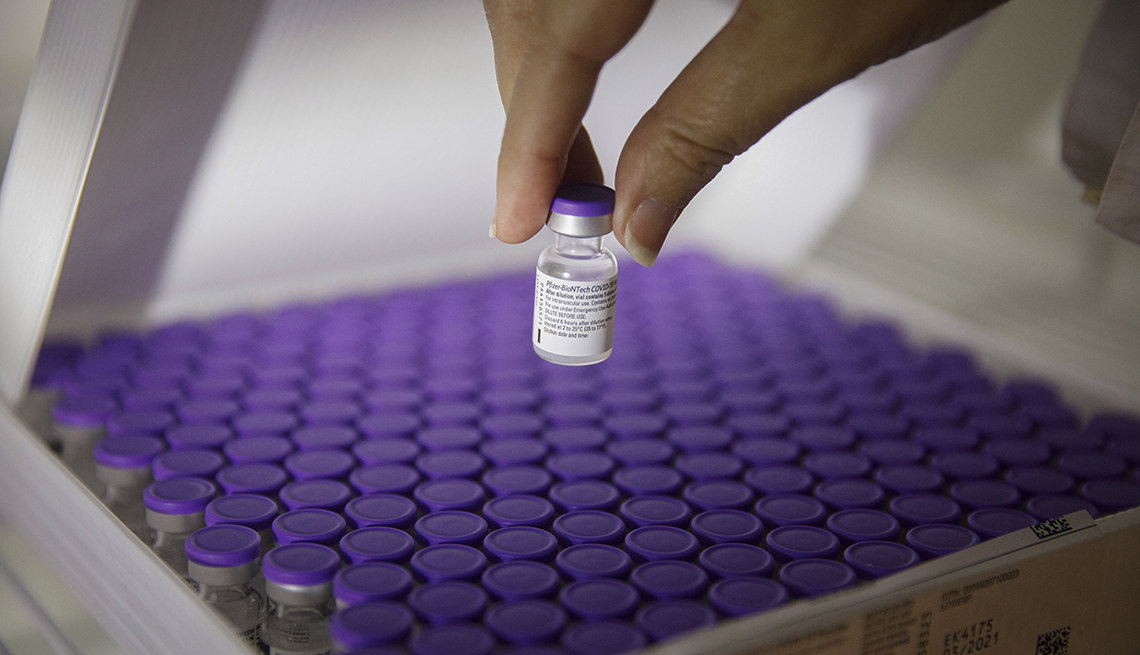
How to understand coronavirus vaccine priority groups
- Select a language for the TTS:
- UK English Female
- UK English Male
- US English Female
- US English Male
- Australian Female
- Australian Male
- Language selected: (auto detect) - EN
Play all audios:

People age 75 and older and frontline essential workers, including police officers, firefighters, teachers, grocery store staff and U.S. Postal Service employees, should be next in line to
get a COVID-19 vaccine, a federal advisory panel recommended on Dec. 20. By a 13-1 vote, the Advisory Committee on Immunization Practices (ACIP) also recommended to the Centers for Disease
Control and Prevention (CDC) that people ages 65 to 74, people ages 16 to 64 with high-risk conditions and other essential workers follow in what's being called Phase 1c, behind
Americans 75-plus and frontline essential employees in Phase 1b. Whether or not to include all people 65 and older in Phase 1b consumed much of the debate during ACIP's five-hour
meeting. The first priority group of 24 million Americans, designated as Phase 1a, began getting inoculated last week with the Pfizer-BioNTech vaccine. This category includes health care
workers and residents and staff of nursing homes. Nearly 6 million doses of the Moderna vaccine, which received its emergency use authorization (EUA) from the U.S. Food and Drug
Administration (FDA) on Dec. 18, have already begun to ship. VACCINE PRIORITY GROUPS PHASE 1A (24 MILLION PEOPLE): * Health care personnel * Long-term care facility residents PHASE 1B (49
MILLION PEOPLE): * Frontline essential workers * People 75 and older PHASE 1C (129 MILLION PEOPLE): * People ages 65-74 * People ages 16-64 with high-risk conditions * Other essential
workers PHASE 2: * People 16 and older not in Phase 1 _Source: CDC_ Kobi Wolf/Bloomberg via Getty Images Under the ACIP recommendation, the second priority group, dubbed 1b, would include 19
million elderly people 75-plus and 30 million essential frontline workers. They would begin to get their shots after those in group 1a who wanted to be vaccinated were taken care of. Then
after group 1b has been vaccinated, 129 million people in group 1c would come next. ACIP says that group should include 28 million Americans ages 65 to 74, 20 million other essential workers
and 81 million people ages 16 to 64 who have high risk factors for the coronavirus. "I voted no,” said ACIP member Henry Bernstein, a physician at Northwell Children's Medical
Center on Long Island, New York, “because I feel that the science regarding COVID-19 morbidity and mortality” is similar among those between 65 years old and 74 years old and those over 75.
Several other committee members questioned splitting the two older age groups. Pablo Sanchez, a doctor at the Research Institute at Nationwide Children's Hospital in Columbus, Ohio,
said that although he voted yes, he also really felt “strongly that the elderly and those with high-risk medical conditions should be up front, over some essential workers who may be
younger." "We're are trying to thread the needle here,” said Peter Szilagyi, a doctor at UCLA. And Beth Bell, a physician at the University of Washington in Seattle, said she
wished “we didn't have to be here making allocation recommendations. And that instead we had enough vaccine to provide it to everybody in the country who wants it."
